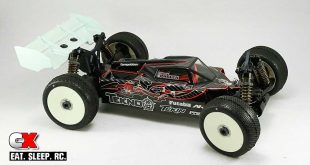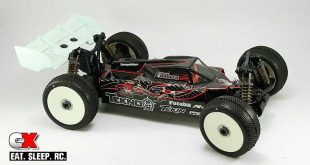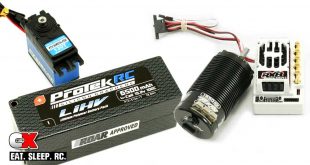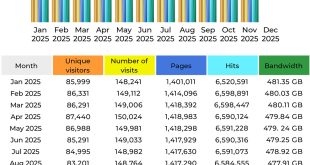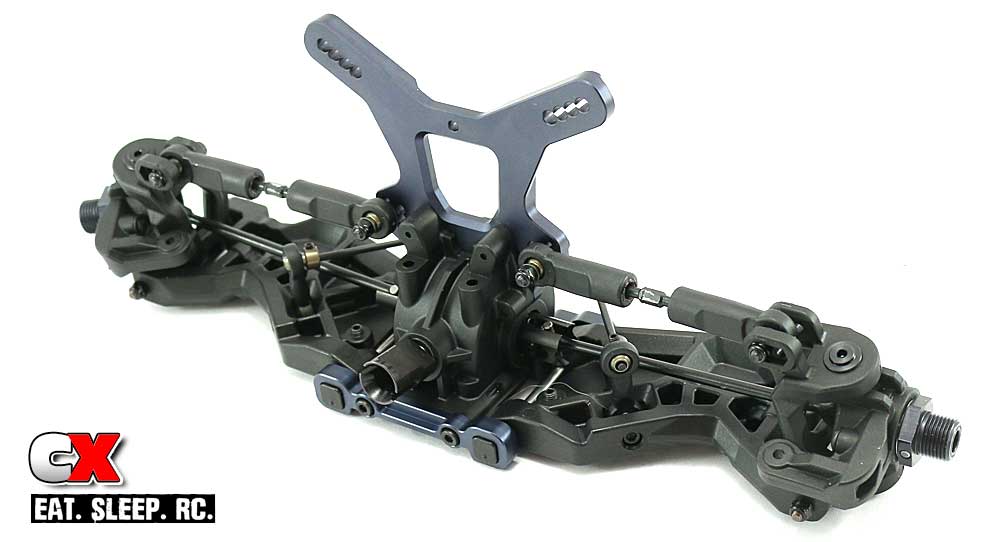
The Build – Part 2
Part 2 of our Tekno RC EB48.4 build involves the bulkheads and suspension, both the front and rear. There is alot going on in this step, being quite a bit longer than usual. We’ll take a break in the middle so you can get a drink, grab a snack or visit the potty.
 The front and rear gearbox cases are different; the front has a slight upward angle at the output shaft while the rear is straight. Make sure you don’t mix these up during the build.
The front and rear gearbox cases are different; the front has a slight upward angle at the output shaft while the rear is straight. Make sure you don’t mix these up during the build.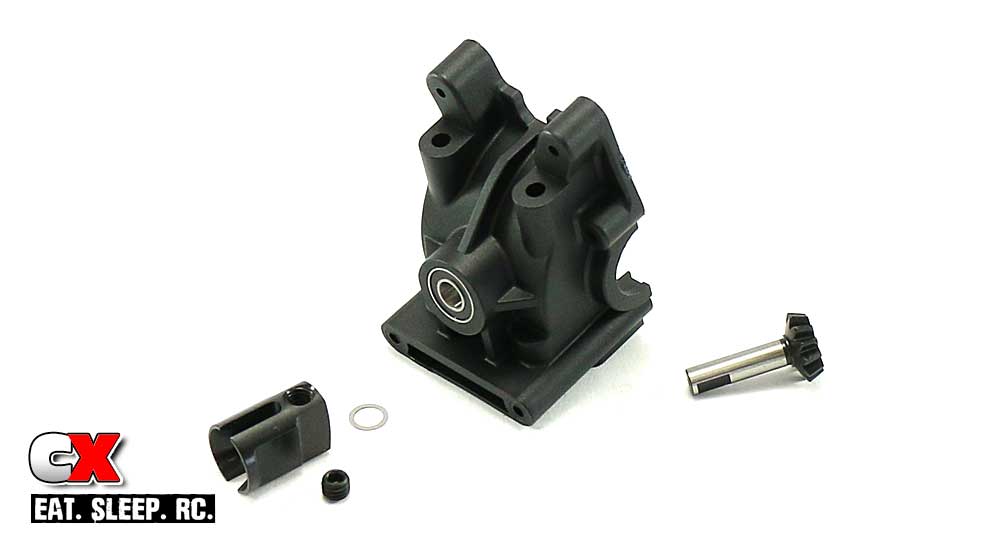
Step 1 is to assemble one half of both the front and rear gearboxes. Start by pressing the 5x13mm bearings into each side of the boxes, then insert the input shaft through the bearings from the inside. Slide the 5x7mm shim onto the input shaft followed by the drive cup. Line up the flat spot on the input shaft with the hole in the drive cup and secure with the M5 grub screw. Use a drop of blue threadlocker to ensure the grub screw doesn’t back out.
Set the front gearbox half aside; we’ll be working with the rear one first.
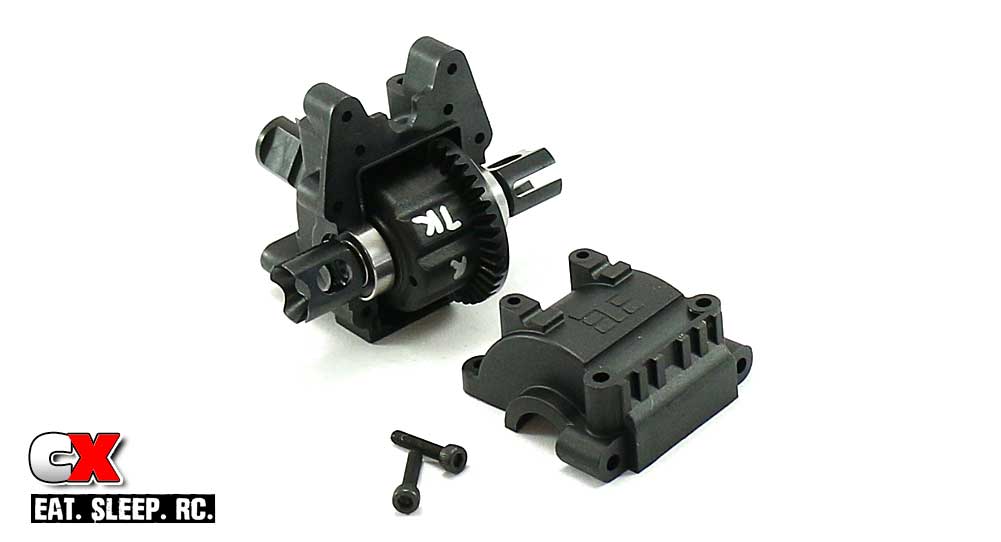
Grab your rear differential assembly (you did keep track of which one is the rear one, right?) and install it into the the bulkhead as shown. Attach the gearbox cover with the M3x14mm screws.
Once assembled, rock the differential side-to-side to see if there is any play. If there isn’t, move to Step 3. If there is, open the gearbox and add a 1mm shim to the gear side of the diff. Re-assemble and rock side-to-side again. If there is still play, open and add another 1mm shim to the diff, this time on the opposite side of the gear. Re-assemble; there shouldn’t be any play at this time.

Attach the rear body mount to the rear shock tower as shown.
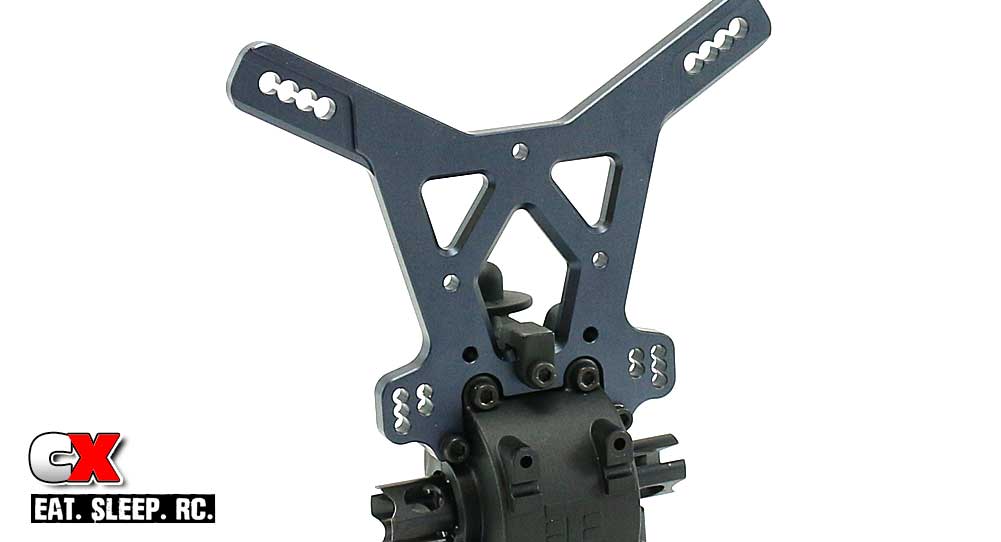
Attach the rear shock tower to the gearbox. Note the orientation of the upper shocks mounts on the tower.
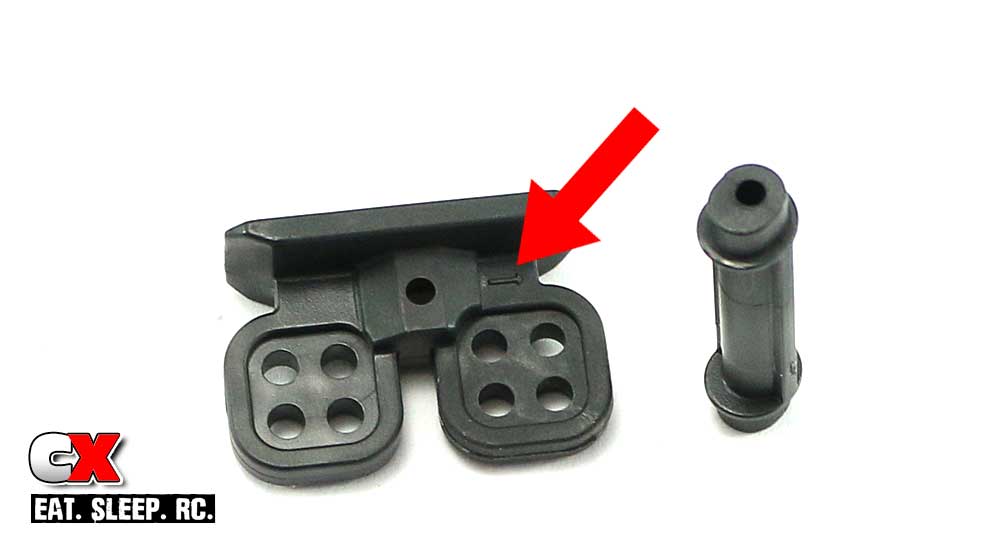
To finish off the rear bulkhead, we need to assembly the rear wing mounts. Notice the small arrow on the mount (notated by the red arrow). This points to the front of the wing mount and helps us identify the wing position settings.

Attach the plastic cross braces to one side of the right wing mount as shown. The kit suggests a #2 forward setting, however we’ll be building it with a #1 forward. Note the two upper cross braces; the mounting hole is offset, mounted ‘up’ in this part of the build.
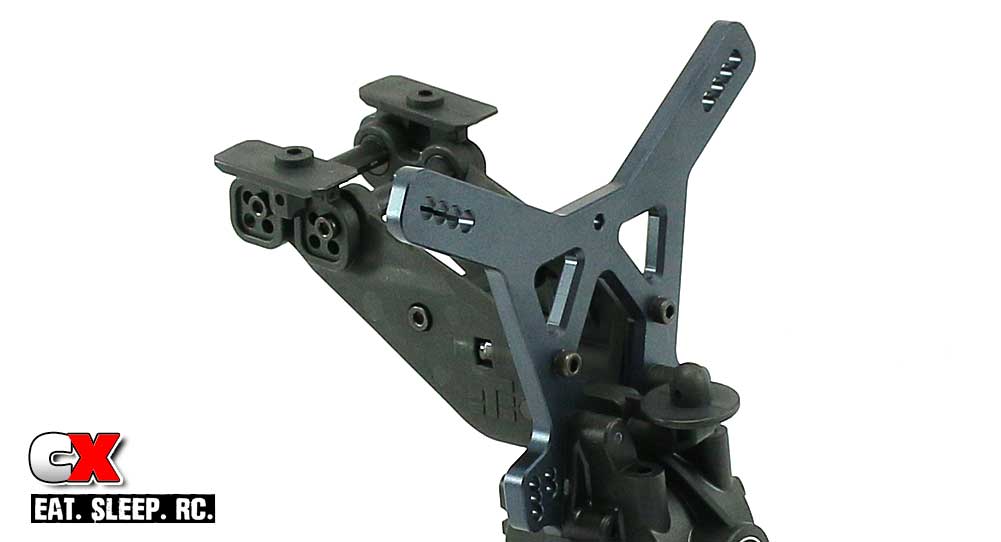
Once your wing mount is complete, attach it to the rear shock tower with the 4 M3x20 screws. Don’t forget to press the M3 locknuts into the recesses in the wing mount.
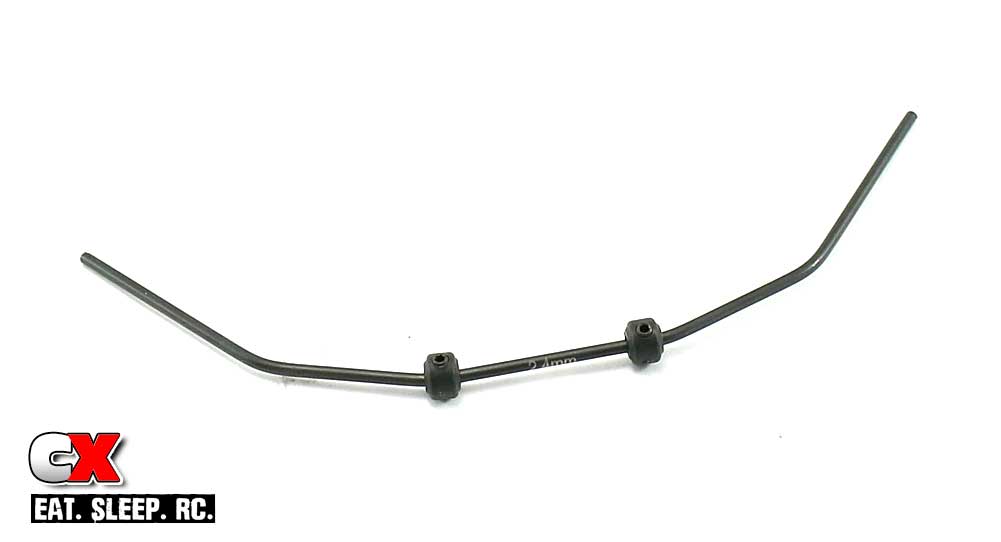
Insert the M3 grub screws into the stops and attach them to the rear, 2.4mm anti-roll bar. The manual shows a distance of 30.2mm between the stops; I suggest keeping them a little farther apart at the moment.
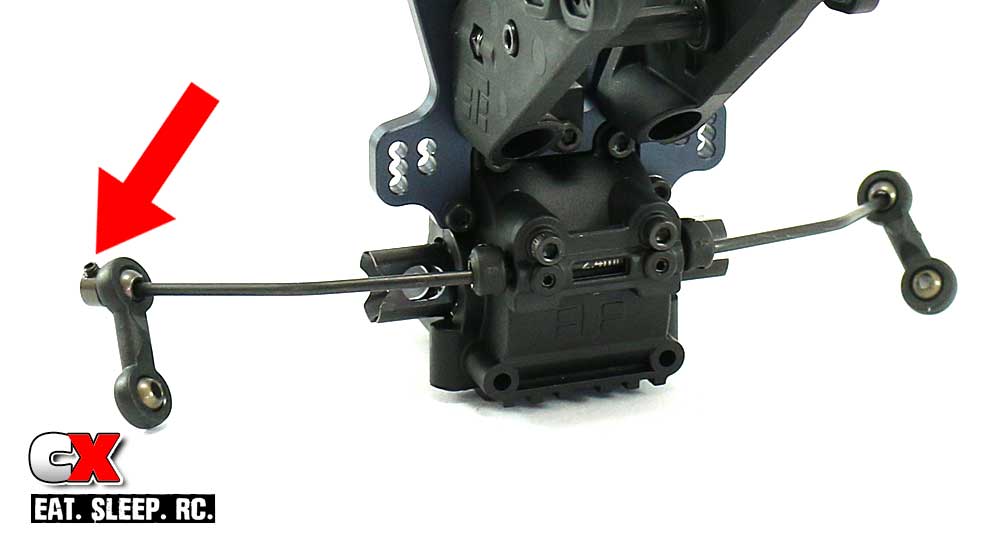
Set the anti-roll bar into place and install the plastic brace. Center the anti-roll bar and slide the stops from Step 8 closer together until they just barely touch the brace; the anti-roll bar should swing freely. Tighten the M3 grub screws in the plastic brace until they make contact with the anti-roll bar, then back them off a smidge. The grub screws are there to keep the anti-roll bar from wobbling but not to hinder movement. Again, make sure the anti-roll bar swings freely.
Assemble the anti-roll bar links and attach to the bar. Note the orientation of the ball mounts (red arrow). Slide the ball mount onto the anti-roll bar until it is flush with the end of the bar, then insert and tighten the M3 grub screw. A very light drop of blue threadlocker is suggested here.
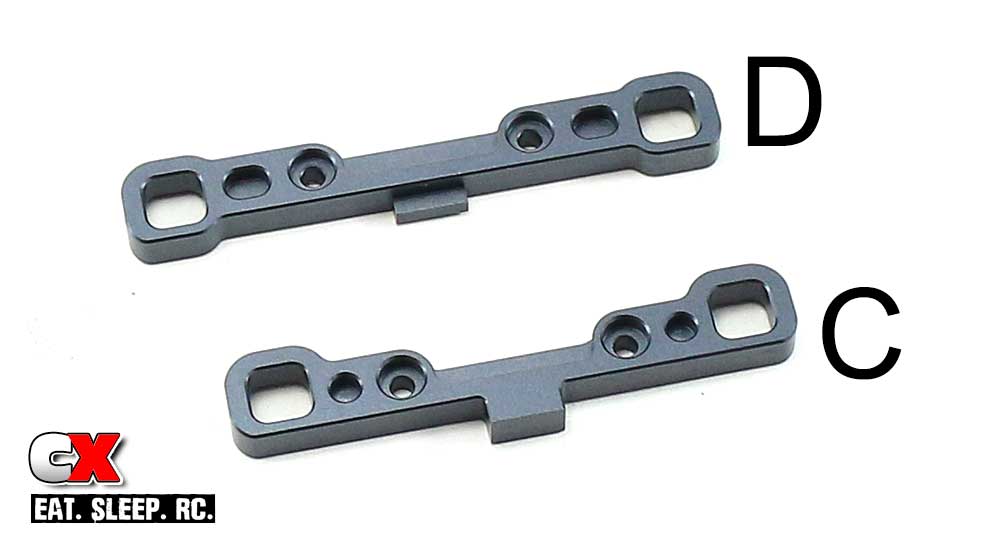
We’ll be attaching the C and D mounts now; here’s a quick pic of both of them together. Grab the C mount.
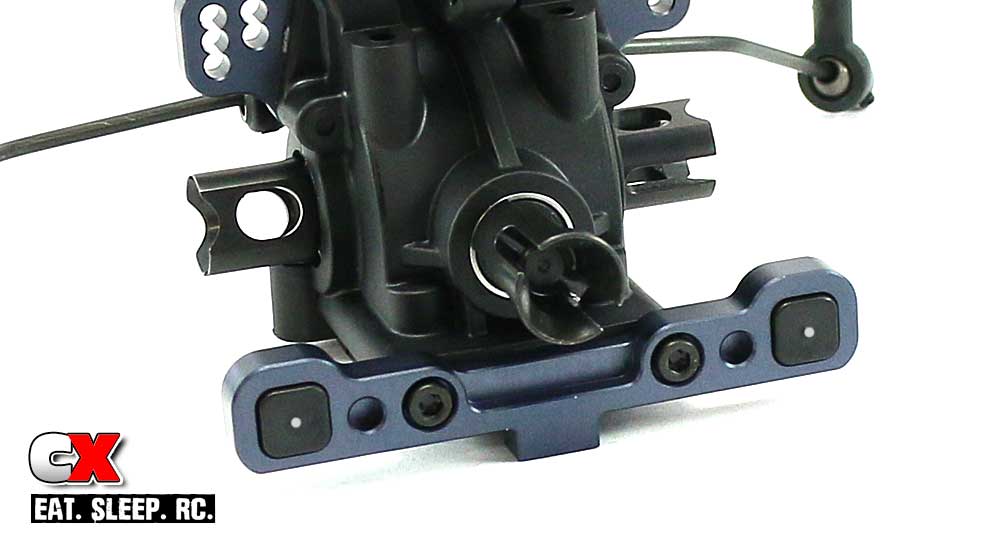
Press a pair of 1-middle inserts into the C block; I’ve highlighted the pip in the picture. Attach the C block to the bulkhead using a pair of M3x14 screws.
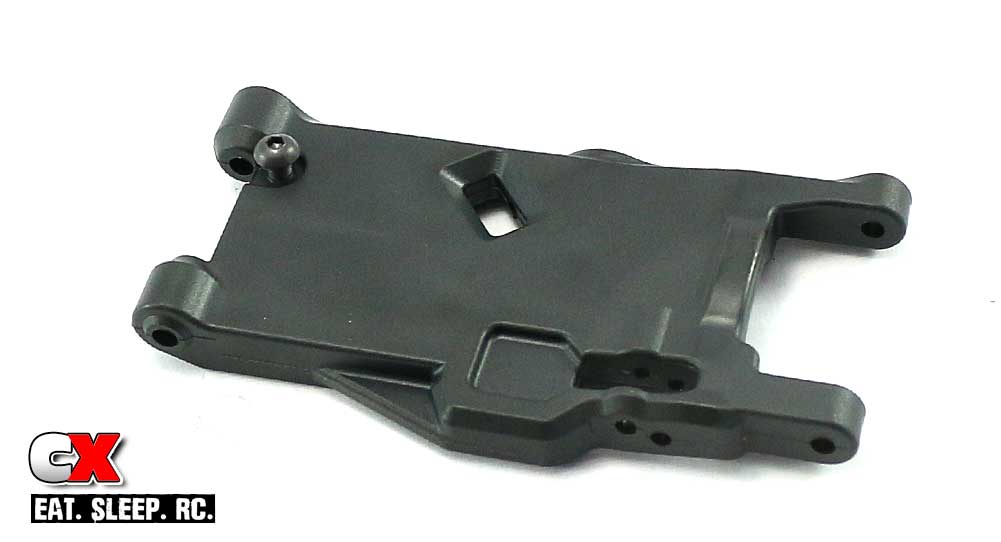
Grab your rear arms and insert the droop screw from underneath as shown. We can’t adjust droop just yet, so I inserted them until the head was level with the arm. Just make sure both screws are equal at the moment.
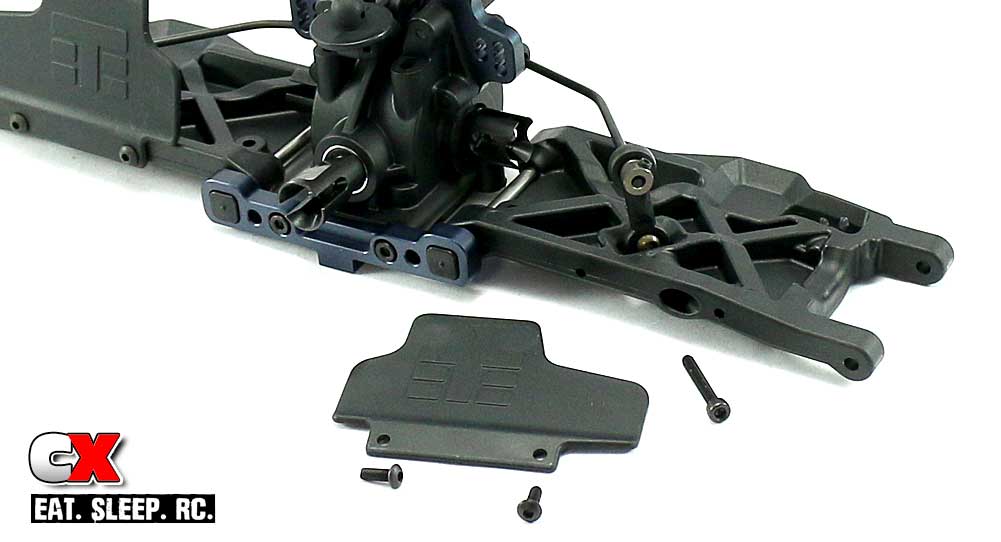
Insert the hinge pins into the C mounts, then slide the rear arms into position; note the orientation. Connect the anti-roll bar with the M3x20 screw as shown, then attach the rear mud guards.
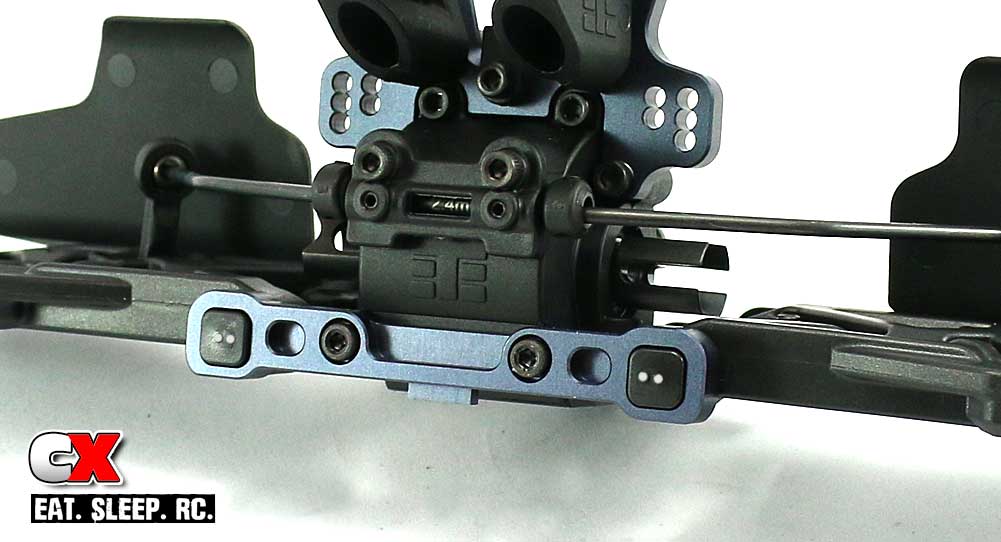
Press the 2-inner inserts into the D block (I’ve highlighted the pips). Align the rear hinge pins with the D block and attach it to the rear bulkhead with the M3x40 screws. Make sure both arm assemblies swing freely.
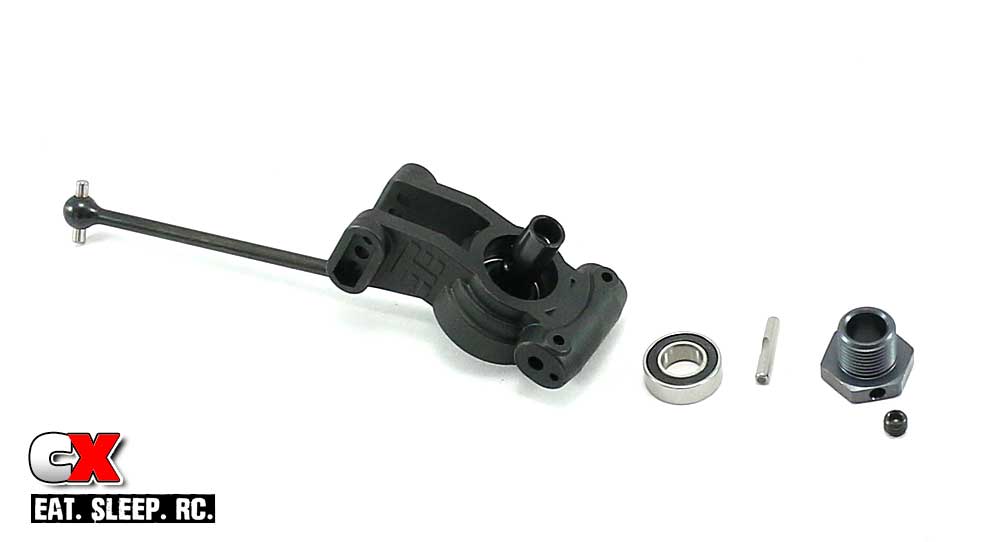
Grab your rear hubs and press the 13x19mm and 8x16mm bearings into place. Slide the pre-assembled CV axle in and through the 17mm hex. Insert cross pin and secure with the M5 grub screw – use blue threadlocker here.
Note that the cross pin has a flat spot on it – you’ll want the M5 grub screw to land on that spot when tightening it down.
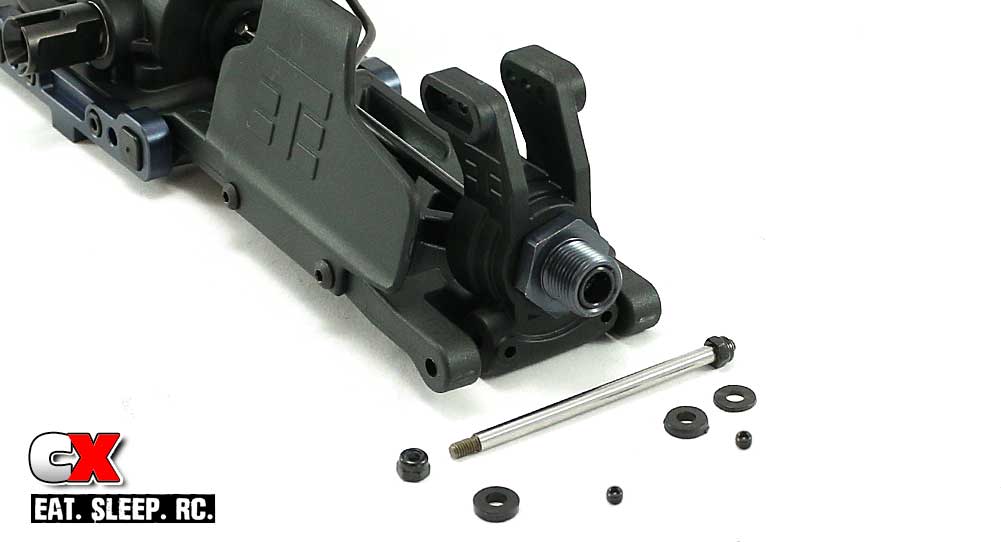
Start this step by attaching one of the M3 locknuts to the rear hinge pins. Set the assembled rear hub into place and slide the hinge pin through the holes to capture it. You will also be inserting wheelbase spacers here; the kit setup uses a thick spacer up front and a thick and thin one towards the rear. Once assembled, secure the hinge pin with another M3 locknut.
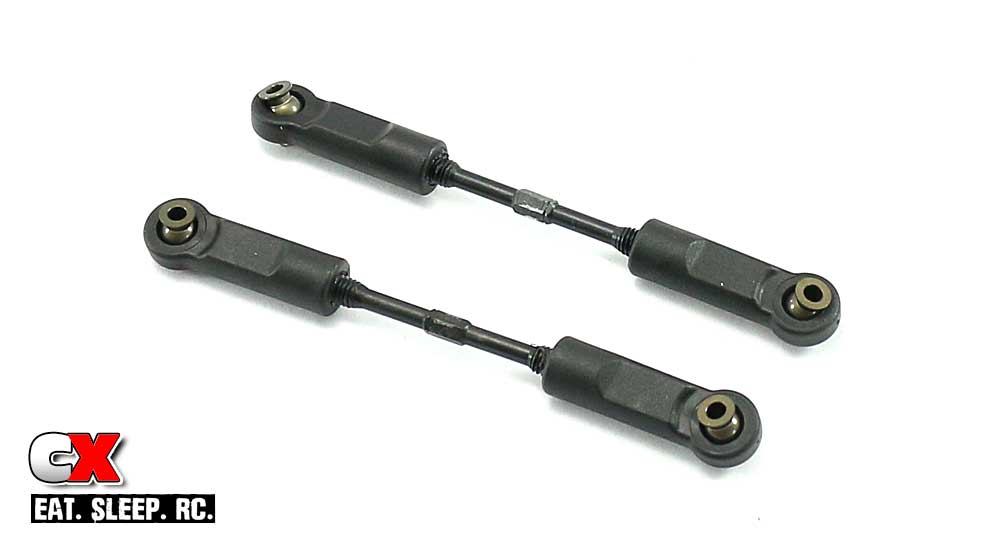
Build a pair of rear camber links. The 38.3mm length is a good starting point.
Racer Tip: To make them easier to screw on, apply a small amount of grease or even chapstick; this works great!
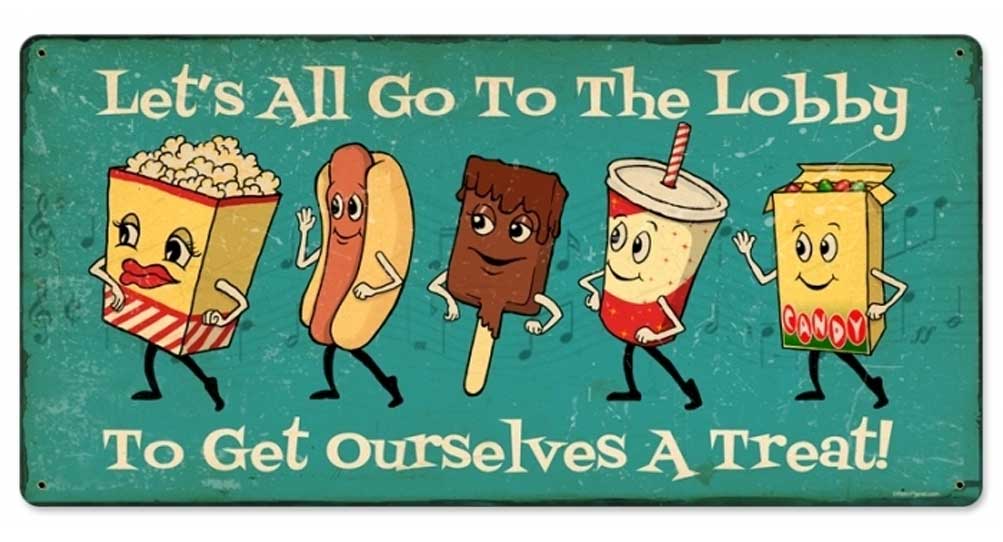
We’re halfway through – you’re doing great! Get up, stretch and get a quick snack. I’ll wait.
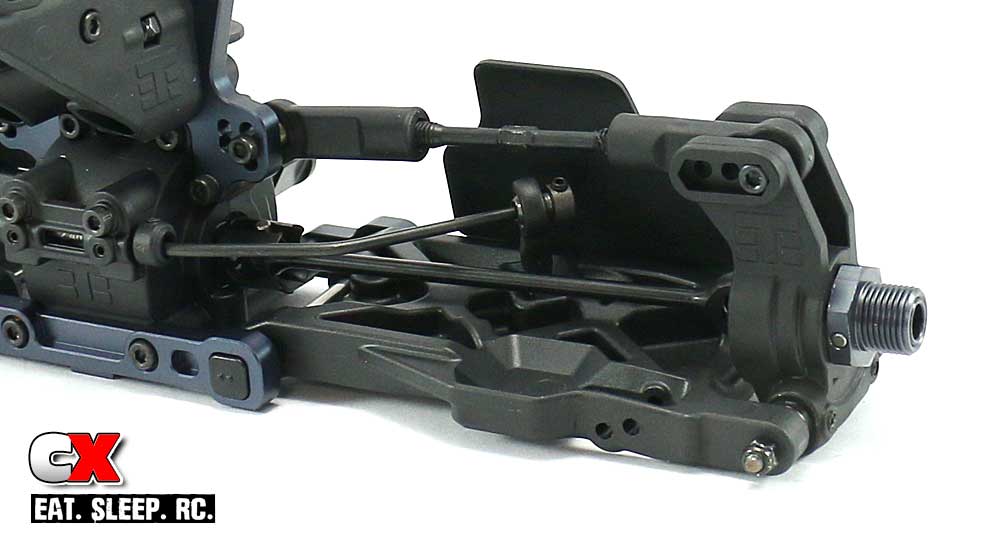
Key the dogbone to the outdrive and attach the rear camber link in the 4C position (see manual for the coding diagram). It is also suggested that you install them with both of the turnbuckle ‘notches’ facing the left side of the car, or driver’s side.
Note that the tower screws are shorter (M3x20mm) than the hub screws (M3x22). Don’t get these mixed up.
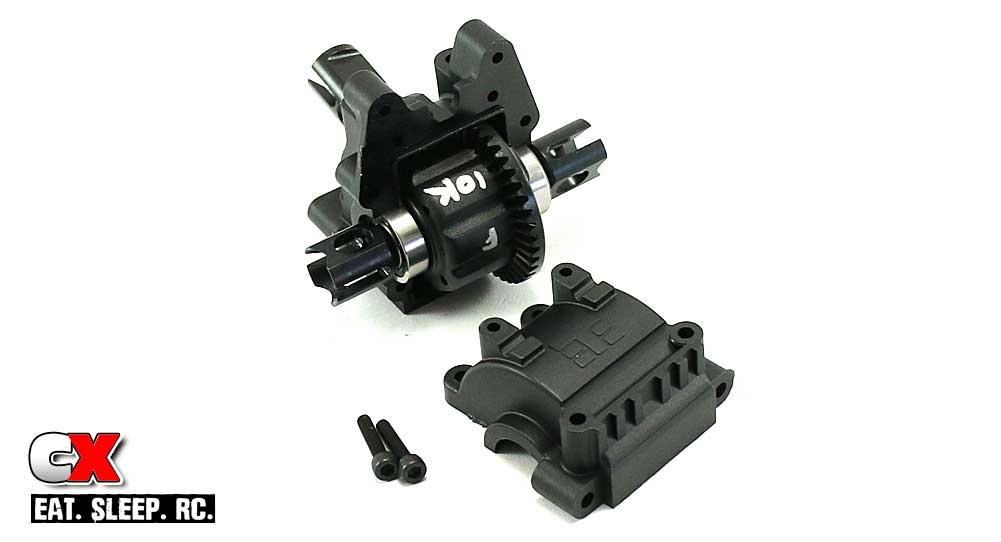
Grab your front gearbox (it has the angled output shaft) and set the front differential into place. Attach the gearbox cap with the two M3x14mm screws.
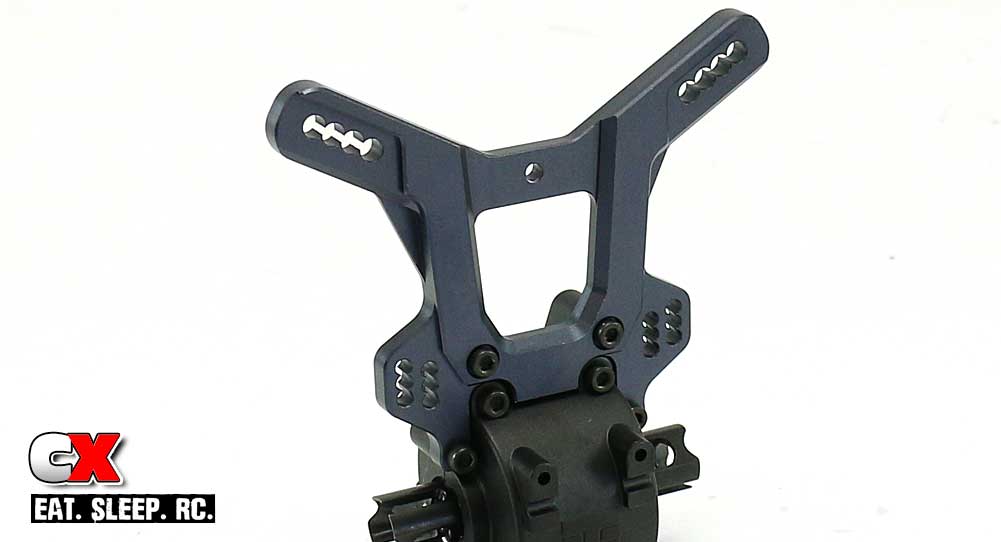
Attach the front shock tower to the gearbox; note the orientation of the upper shock mounting holes.
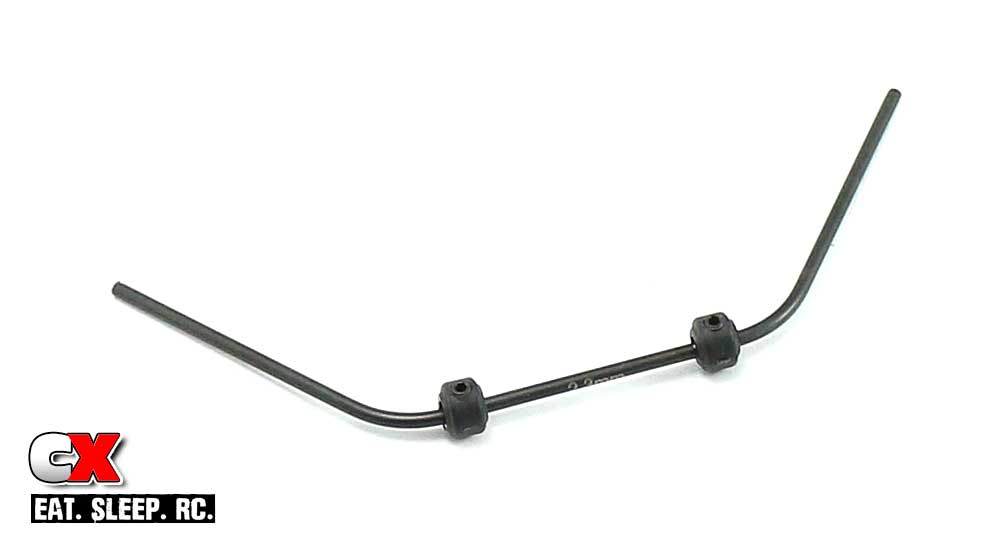
Assemble the front, 2.3mm anti-roll bar like you did the rear. Spacing suggests 30.2; I’d make this a little wider as well.
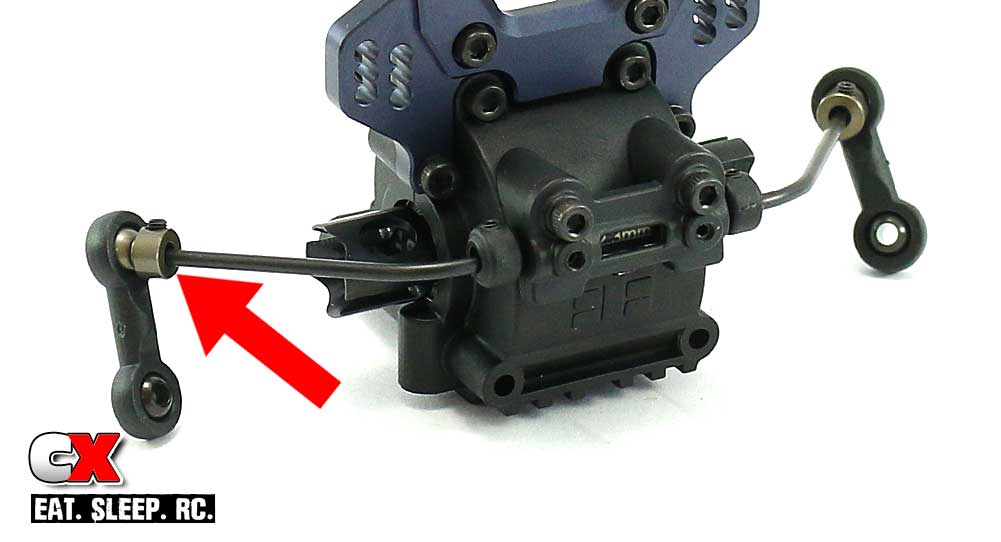
Attach the bar to the bulkhead, capture it with the plastic cap and use the M3 grub screws to keep the bar from wobbling.
Build the links, but this time install them with the ball mount opposite from the rear (see the red arrow). Slide the ball onto the anti-roll bar until it is flush with the end of the bar, insert the M3 grub screw and tighten it down. A very light drop of blue threadlocker is suggested here.
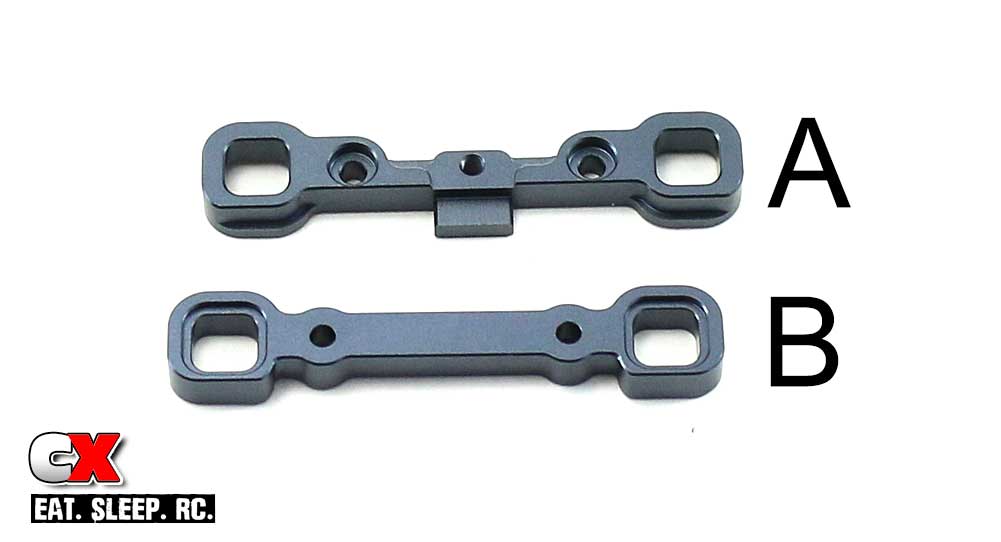
A closer look at the A and B arm mounts. Grab the B mount.
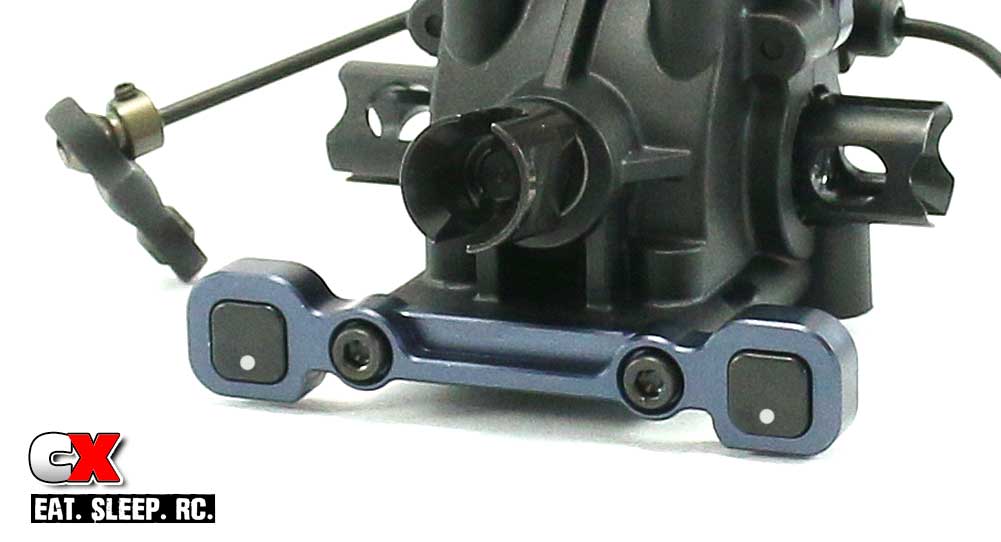
Press the 1-down inserts into the B mount and attach it to the bulkhead with the M3x14 screws as shown. I’ve highlighted the pips so you can see the orientation.
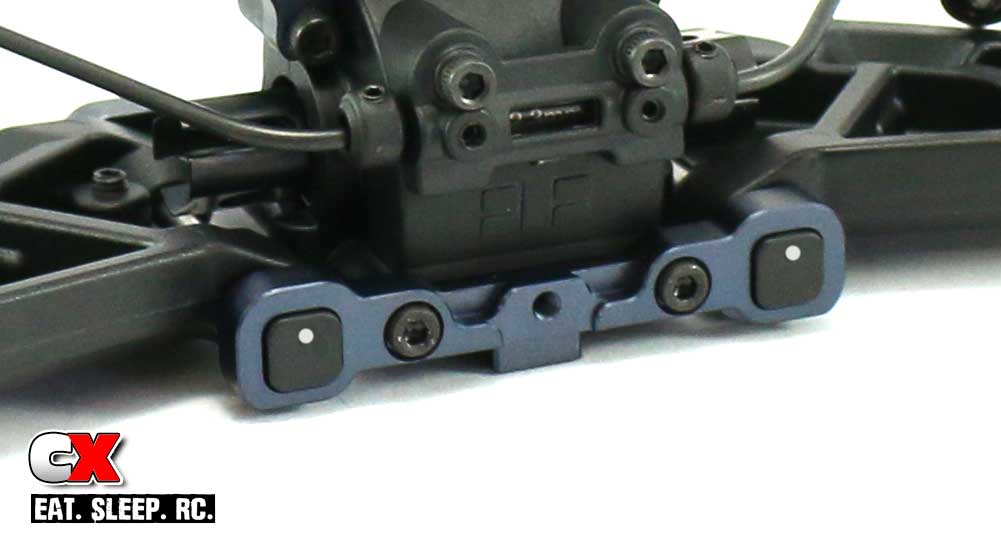
Insert the droop screws into the bottom of the front arms (if you haven’t already done this), making them equal on both sides. Again, I set them to where the head of the screw is level with the bottom of the suspension arm.
Insert the hinge pins into the B block and slide the arms in place (arm ‘cutouts’ towards the rear of the bulkhead).
Press the 1-up inserts (again, more highlighted pips) into the A mounts and attach to the bulkhead with the M3x40 screws.
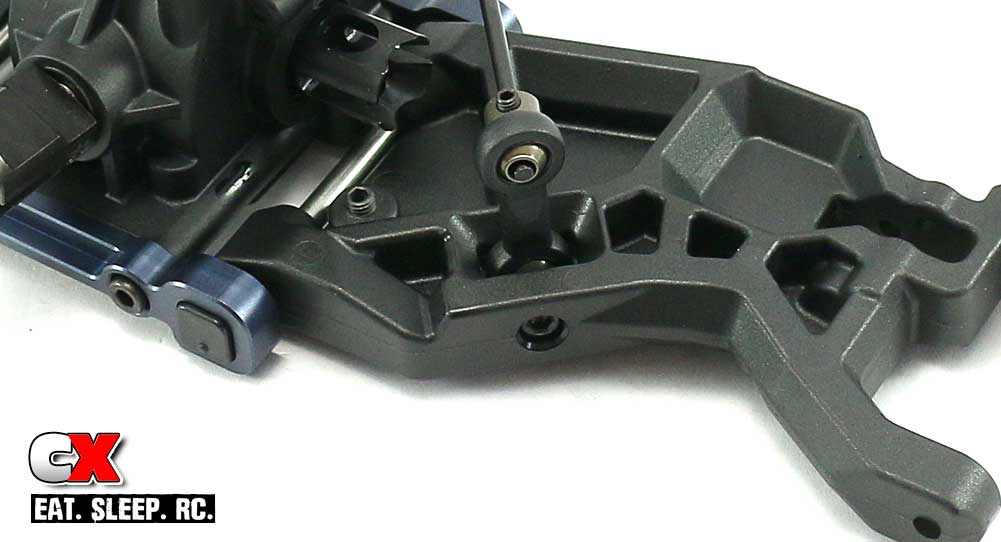
Attach the anti-roll bar to the arms with the M3x20 screws. This view also gives you a better look at the arm mount orientation.
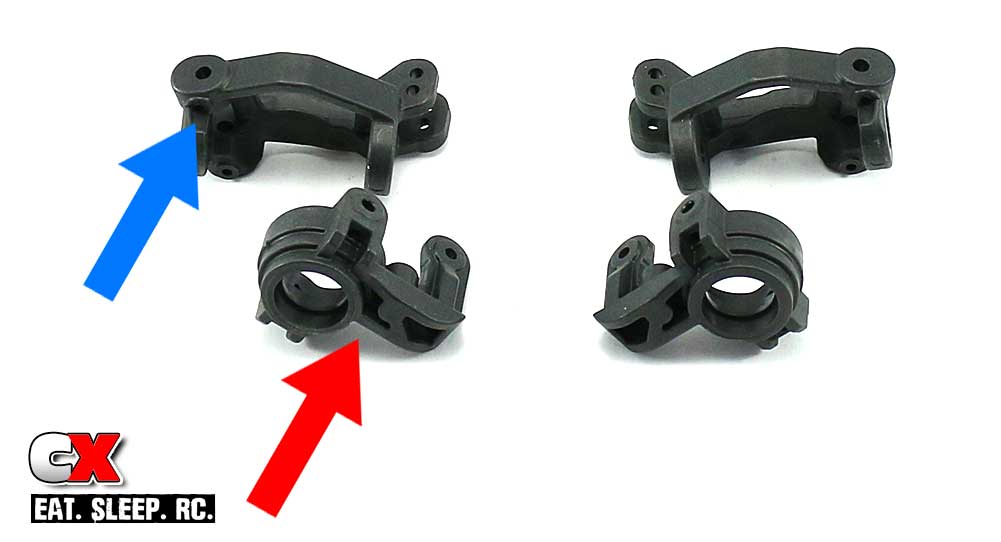
Before we assemble the caster blocks and steering arms, take a close look at the picture to see the orientation of the parts.
The red arrow shows the raised part of the steering arm. The blue arrow shows the identifying screw hole for a later step. Make sure you group these parts together like this; the group on the left is for the left side of the car (driver side), the group on the right for the right side.
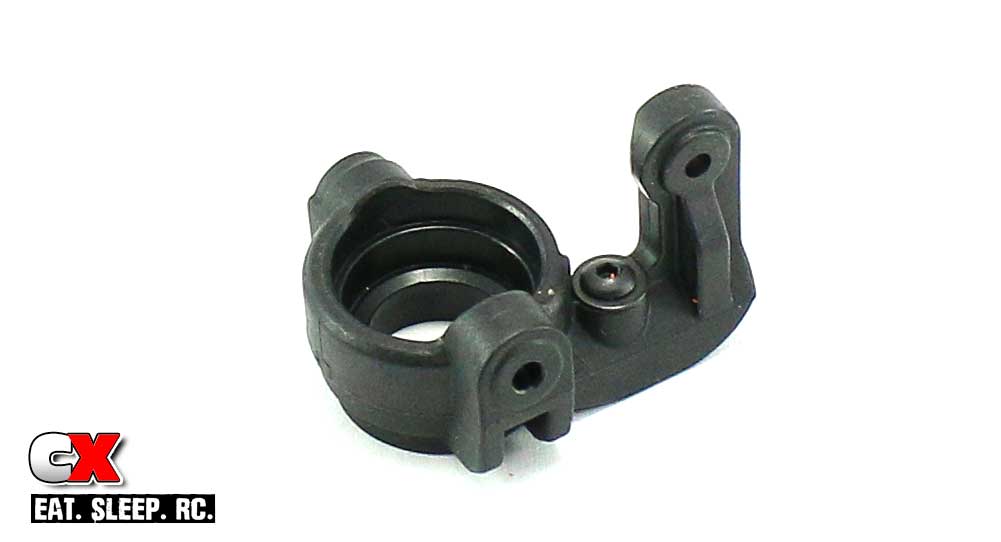
Insert a M3x6 screw and 8mm washer into each steering arm. These act as mechanical steering stops.
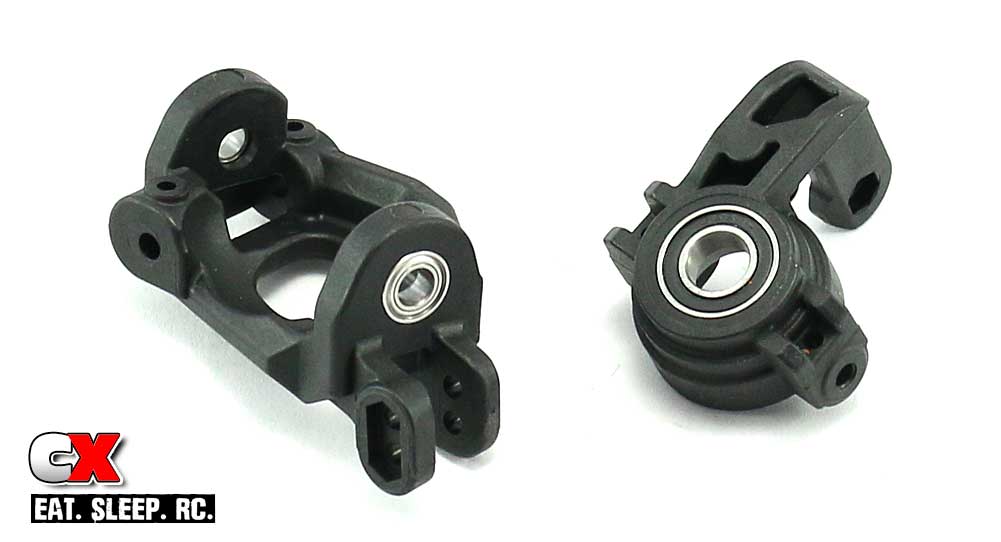
Press the 5x10mm bearings into the top and bottom of each caster block and a 13x19mm and 8x16mm bearing into each steering block.
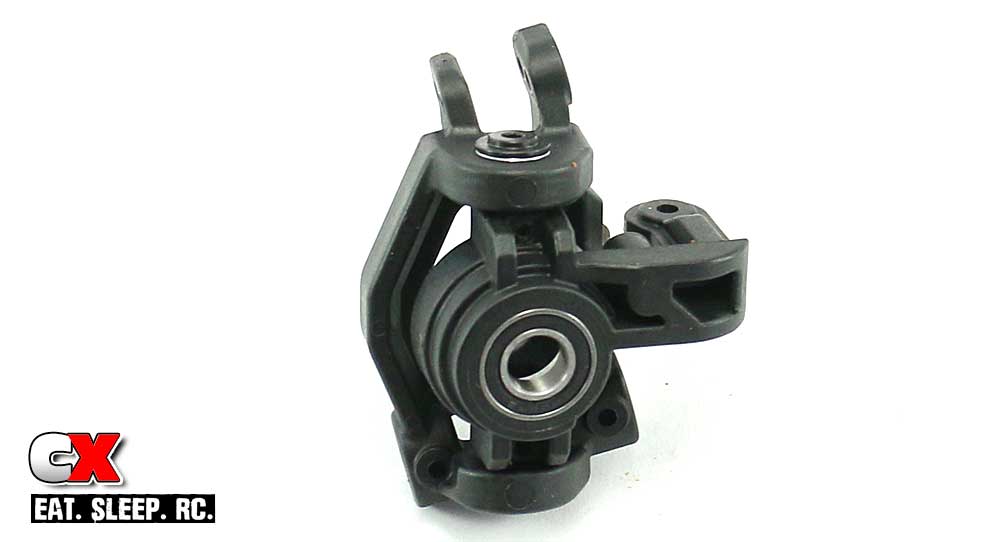
Mate the steering block assembly and the caster block assembly together and secure with the upper and lower kingpin screws. Since they don’t thread in, you’ll need to capture them with the M3 grub screws. DO NOT overtighten these screws; snug them up and then give the kingpin screw a tug to make sure it is secure.
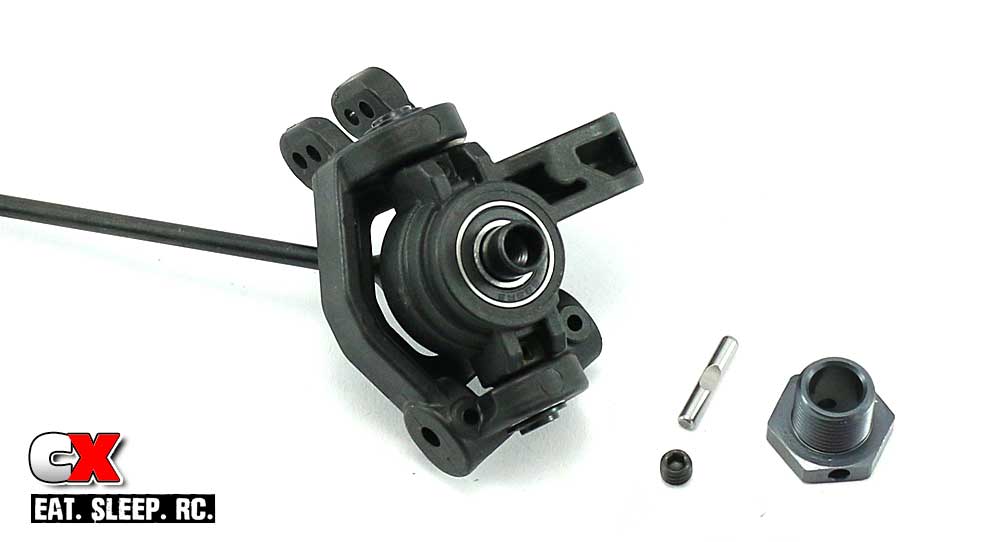
Slide the assembled CV axle through the steering assembly followed by the 17mm hex. Like the rear, you’ll want to insert the cross pin through the hex and secure with the M5 grub screw. Make sure the grub screw hits the flat spot on the cross pin. Blue threadlocker is suggested here.
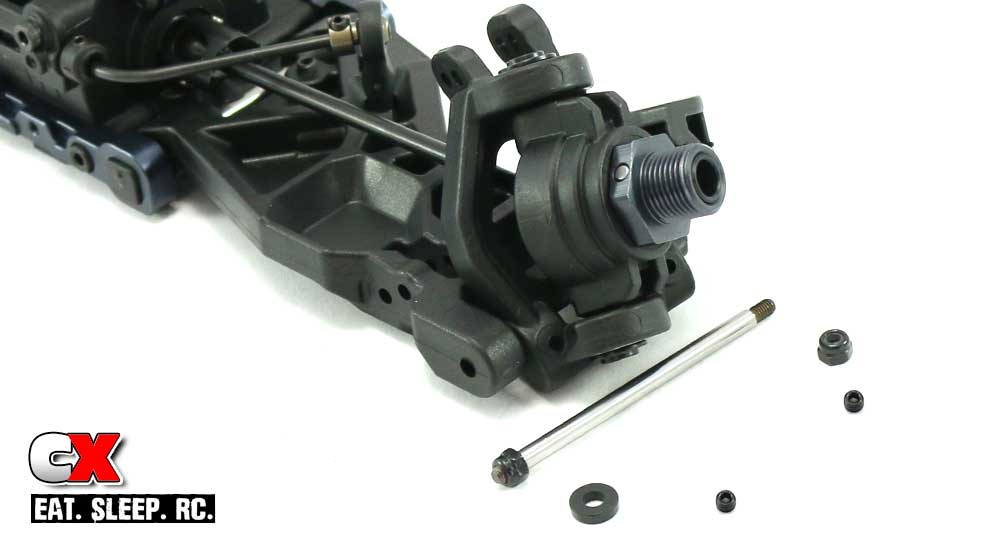
Place the steering assembly into place on the front arm as shown. Attach a M3 locknut to one end of the hinge pin and slide it through the arm and steering assembly. We’ll be using a wheelbase spacer here as well; include it in front of the steering assembly. Add another M3 locknut to the hinge pin.
Screw the two M3 grub screws into place to keep the hinge pin from rotating. Remember, do not overtighten these!
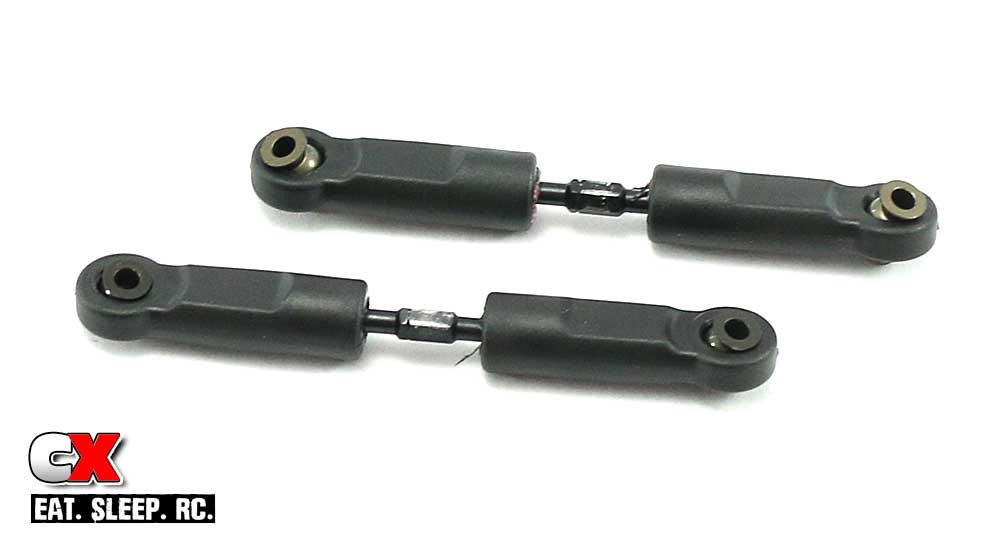
Build the front camber links; the kit suggested 14mm is a good start. Note the balls that insert into the rod ends are different; one has a flange, one doesn’t. It’s imperative that the flanged ball mounts to the tower.
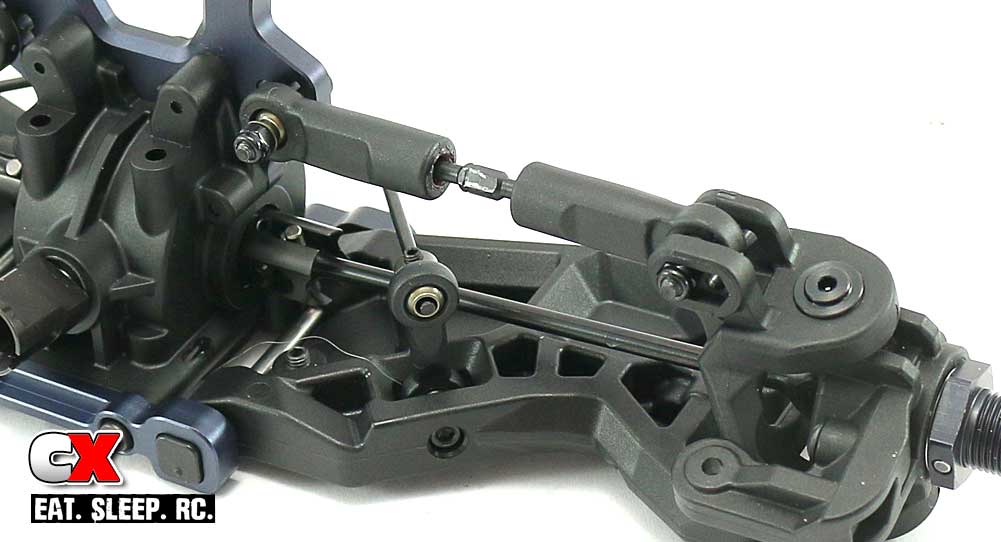
Insert the CV axle into the diff outdrive and attach the camber link to the 5A position. (see manual for the coding diagram). Match the turnbuckle notches to the ones on the rear of the buggy; they should be set to the left side of the car.
Whew – that was a pretty long step! But, you’ve got a pretty good looking set of front and rear clips ready for installation! Let’s move on to the steering.
Tekno RC EB48.4 Build – Part 1 – Differentials
Tekno RC EB48.4 Build – Part 2 – Bulkheads / Suspension
Tekno RC EB48.4 Build – Part 3 – Steering
Tekno RC EB48.4 Build – Part 4 – Center Bulkhead
Tekno RC EB48.4 Build – Part 5 – Shocks
Tekno RC EB48.4 Build – Part 6 – Electronics
Tekno RC EB48.4 Build – Part 7 – Body, Wheels and Tires
 CompetitionX CompetitionX is the most up-to-date source for RC Car News, Reviews and Videos for Radio Control. We also have the most comprehensive Manual Database on the web.
CompetitionX CompetitionX is the most up-to-date source for RC Car News, Reviews and Videos for Radio Control. We also have the most comprehensive Manual Database on the web.
